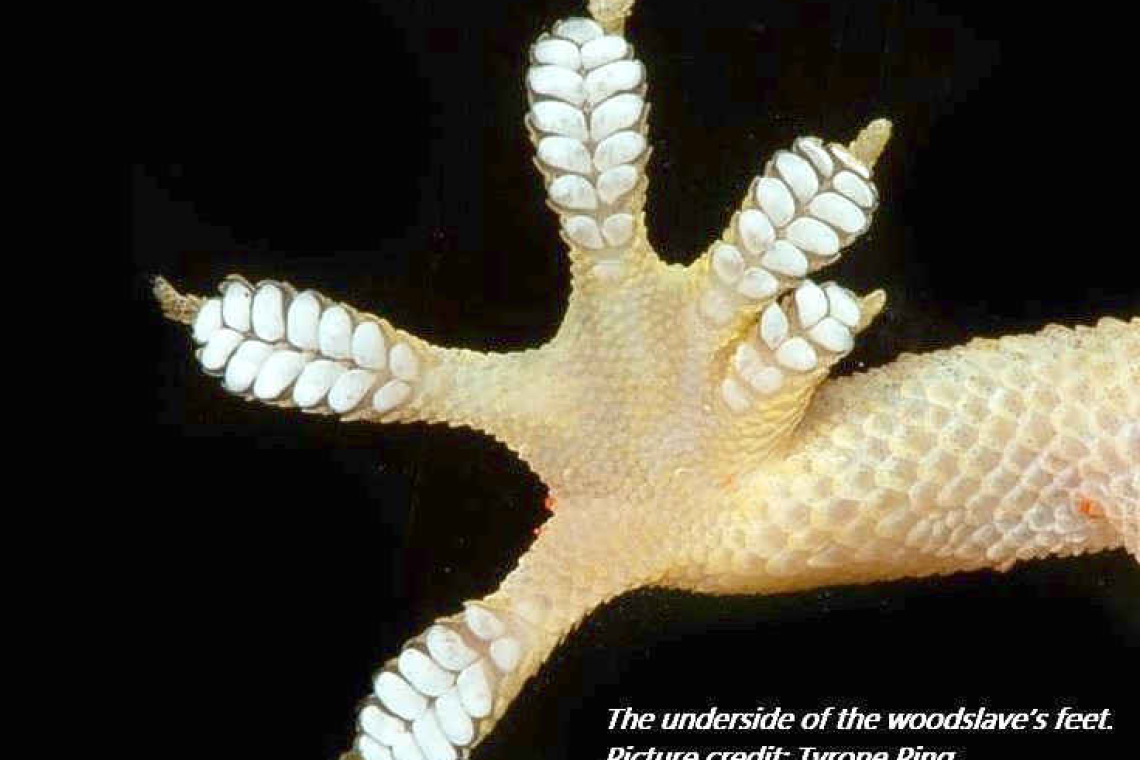Ever hear strange noises inside of your room, or just outside, and you are not sure what is making them? It’s probably a woodslave – a type of gecko that can scale the walls, is often found indoors, and makes a clicking, chirping noise. It’s called a woodslave on many Caribbean islands, and is also commonly called a Tropical House Gecko or African House Gecko.
Here are some fun facts about this odd but familiar creature. If you can get your hands on a physical copy of The KIDS Herald, we've made a fun crossword puzzle based on this story.
Its scientific name is Hemidactylus mabouia. The origin of the word is Greek, plus an unknown language from the Americas. The Greek part refers to the split ridges found under its feet, hemi meaning half, and dactylos meaning fingers. The word Mabouia is harder to track but seems to have come from a language in the Americas, referring to something evil, or something that induces disgust or fear.
Fitting this negative connotation, there used to be a superstition that these geckos would jump onto people, remain attached, and kill with venom. But don’t worry, they are not venomous or aggressive, and while they technically can bite you, they wouldn’t – unless they really feel threatened. They are scared of humans and run away when you get close. (But just leave them alone; never approach and harass animals.)
On St. Maarten, they used to say that if you get one on your skin, they would stick on so strongly that you would need a hot iron to remove it. Woodslaves are still seen as a bad omen in some places. On the other hand, many countries consider them a sign of good luck.
What has inspired superstition, strong feelings and even the name of this gecko, is its ability to climb walls, as if defying gravity. They can scale the wall quicker and better than Spider Man, because they can grip the vertical surfaces very well with their feet. This is because of the lamellae, or ridges, under their feet. These are grippy, spike-like scales. The same is true for other types of geckos.
What people do like about them, is that they eat harmful pests in the home. They eat cockroaches, centipedes, moths, some spiders, as well as grasshoppers and beetles. They mainly feed at night, and they sometimes wait near light sources (think of porch-lamps) and feed on insects that are attracted to the light.
The gecko is native to sub-Saharan Africa, but are now found all over the tropical areas of the Americas. In North America, they are especially present in Florida. They can be found on most Caribbean islands.
They survive well in places where people live, unlike many other animals, so their habitat is not very threatened – they can live in trees, in the rainforest, in the scrub forest (where there is a dry season), in sandy areas, under rocks in grassy areas, and both outside and inside of houses. Young geckos don’t travel as much and stay low to the ground (not high on walls), close to shelter.
Their colour can range from dark brown, to pale grey or pinkish, almost white. Most of them have black or brown bands, and their colour can actually change (based on temperature/light).
They can spontaneously drop their tails when threatened by a predator – this helps them to distract the predator and flee.
Now what about that sound – that clicking, peeping, squeaking and chirping? The chirping, done in various frequencies, is done by males, usually to attract a mate. Males also chirp in a low frequency, when fighting another male.







